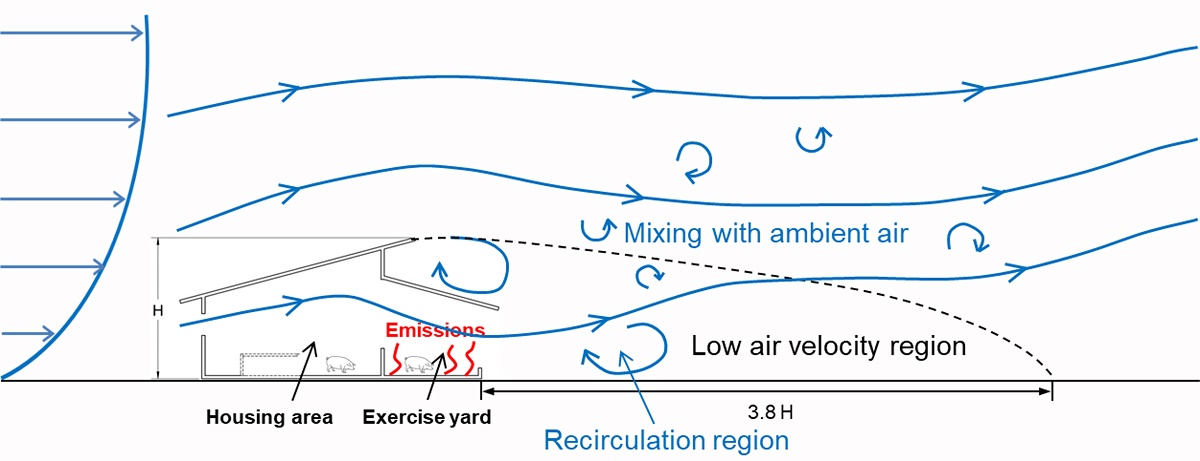The application of naturally ventilated pig buildings (NVPBs) with outdoor exercise yards is on the rise mainly due to animal welfare considerations, while the issue of emissions from the buildings to the surrounding environment is important. Since air pollutants are mainly transported by airflow, the knowledge on the airflow characteristics downwind the building is required. The objective of this research was to investigate airflow properties downwind of a NVPB with a roofed outdoor exercise yard for roof slopes of 5°, 15°, and 25°. Air velocities downwind a 1:50 scaled NVPB model were measured using a Laser Doppler Anemometer in a large boundary layer wind tunnel. A region with reduced mean air velocities was found along the downwind side of the building with a distance up to 0.5 m (i.e. 3.8 times building height), in which the emission concentration might be high. It was found that a smaller roof slope (i.e. 5° slope) resulted in a higher and shorter wake zone and thus a shorter air pollutant dispersion distance. It was concluded that a smaller roof slope could contribute to the dilution of air pollutants and a lower air pollutant concentration near the ground.

